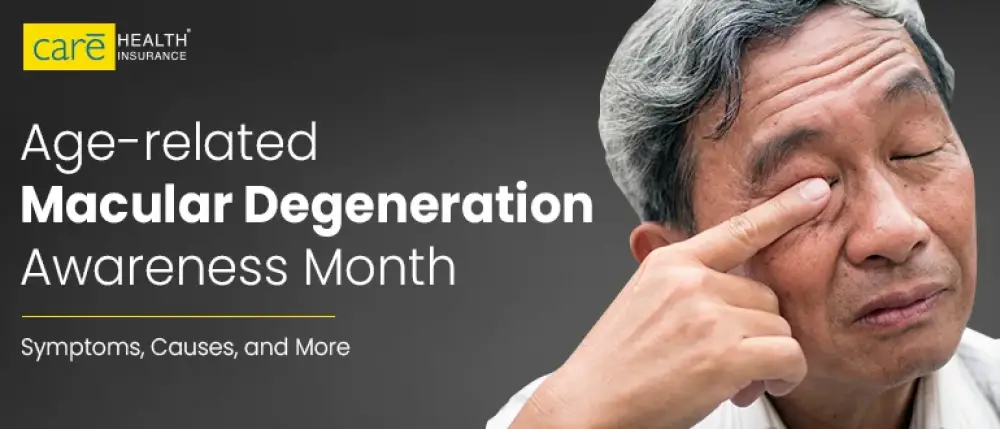
Save tax up to ₹75,000~ u/s 80D
Save tax up to ₹75,000~ u/s 80D
Respiratory diseases affect the lungs and other parts of the respiratory system and are a primary cause of health issues and deaths in India. Understanding its causes, identifying the symptoms, and receiving timely treatment can assist in managing respiratory conditions efficiently. Here is a guide that helps protect your lungs from the effects of respiratory illnesses.
Our respiratory organs work tirelessly to keep our body going by delivering oxygen and expelling carbon dioxide. Made up of your lungs, nose, voice box, throat, mouth, and diaphragm, the respiratory system helps humans inhale and exhale up to 30,000 breaths daily. However, unbearable fumes, global warming, vehicle pollution, and factory smoke are pushing air pollution that affects the respiratory system, leading to respiratory diseases.
Respiratory diseases affect the lungs and airways, causing breathing difficulties and impaired oxygen exchange. They range from mild infections to chronic conditions requiring long-term management. The most common respiratory diseases are asthma (COPD), pneumonia, and lung cancer.
At Care Health Insurance, we aim to provide optimum healthcare coverage complemented with an affordable premium. Choose from some of the best-selling health insurance plans at Care Health Insurance:
Respiratory diseases are a group of conditions impacting the lungs and airways, causing serious issues like breathing. Here are some of the most common types of respiratory diseases:
These respiratory illnesses block or restrict airflow, making breathing difficult. Here are the instances:
This type occurs due to viruses, bacteria, or fungi and impacts lung functionality. It is transmissible from one individual to another. Here are various conditions:
This type of disease decreases lung expansion and restricts the air the lungs can breathe. Here are some conditions:
This type of respiratory disease impacts the blood vessels in the lungs, causing circulation problems such as:
These respiratory diseases involve dangerous particles, pollutants, or chemicals causing lung illnesses. Here are the examples:
This type of respiratory disorder affects breathing practices during sleep, causing interrupted sleep and oxygen deprivation. The examples are:
It is the uncontrolled development of uncommon lung cells, usually related to poor lifestyle habits like smoking and environmental pollutants.
Each type of respiratory disease involves varied causes, treatments, and symptoms. Early diagnosis and timely management make improving lung health and general well-being easier.
Identifying the symptoms of respiratory diseases in the initial stages helps in the early diagnosis and treatment of respiratory system illnesses. The symptoms depend on the specific condition but commonly include:
Determining the causes of respiratory diseases can assist people in involving precautionary methods to shield their lung health. Factors contributing to the growth of respiratory system diseases involve:
Early diagnosis enables effective management of respiratory diseases and averts complications. Diagnosing respiratory system diseases involves several tests that assist a healthcare expert in identifying and determining the underlying cause of respiratory disease.
To understand whether the patient has a lower respiratory infection, the doctor will ask questions about the symptoms and perform a physical evaluation test, like listening for unusual breathing sounds. Here are the diagnostic tests:
The treatment options aim to alleviate the symptoms, improve lung function, and control complications. Treatment for respiratory system diseases varies depending on their type and severity. Here are the treatment options for common respiratory diseases:
1. Medications: Doctors recommend the drugs or medications to treat different respiratory system diseases, which are:
2. Oxygen Therapy: Ensures proper oxygen in the blood levels for individuals experiencing severe respiratory system diseases. It is crucial to treat COPD or lung failure cases.
3. Pulmonary Rehabilitation involves exercises and nutritional advice to assist individuals in improving endurance, lung capacity, quality of life, and overall well-being.
4. Lifestyle Changes:
5. Vaccination: Necessary for respiratory system infections like influenza and pneumococcal illness, mainly for people with severe conditions to stop secondary infections.
6. Regular Monitoring and Follow-up: One must regularly visit a health expert to adjust treatment plans, observe lung function, and handle complications. Spirometry tests assist in monitoring the growth of a disease.
7. Environmental Controls: Maintain good air quality indoors, try using air purifiers for ventilation, and prevent exposure to toxicants and allergens that can cause respiratory system issues.
If you intend to decrease the risk of growing respiratory system diseases, then make sure to follow the precautionary tips:
Respiratory system diseases cause regular hospital visits, pricey treatments, and long-term management expenses. Managing respiratory disease treatment can become unbearable without health insurance. Hence, a health insurance plan in this situation guarantees coverage for medical costs and quality care. Here is how health insurance can help in covering the treatment cost for respiratory diseases:
At Care Health Insurance, we offer comprehensive plans to meet the diverse needs of individuals. Here is how Care Health Insurance can help:
Respiratory diseases can affect anyone, but early detection and timely management can improve quality of life. Understanding which diseases are related to the respiratory system, their causes, symptoms, and prevention methods helps people stay healthy. In addition, investing in a comprehensive health insurance plan like Care Supreme ensures access to the best medical care without financial stress.
So, take control of your respiratory health today by adopting preventive measures and choosing a reliable health insurance plan.
Look for hospitals around you

^^Number of Cashless Healthcare Providers as of 31st March 2024
**Number of Claims Settled as of 31st March 2024
^10% discount is applicable for a 3-year policy
Get the best financial security with Care Health Insurance!
Sales:phone_in_talk1800-102-4499
Services:8860402452
Live Chat